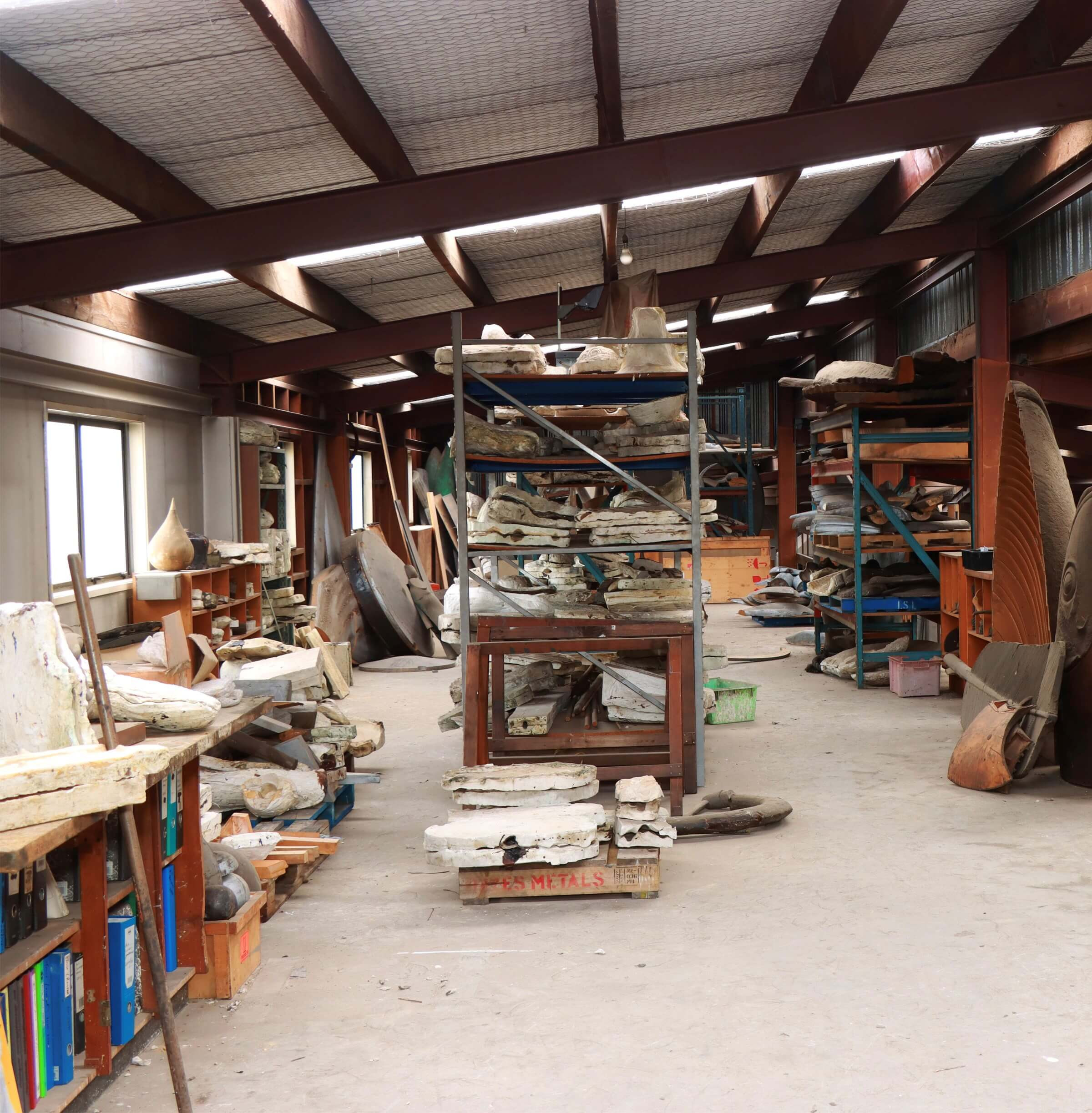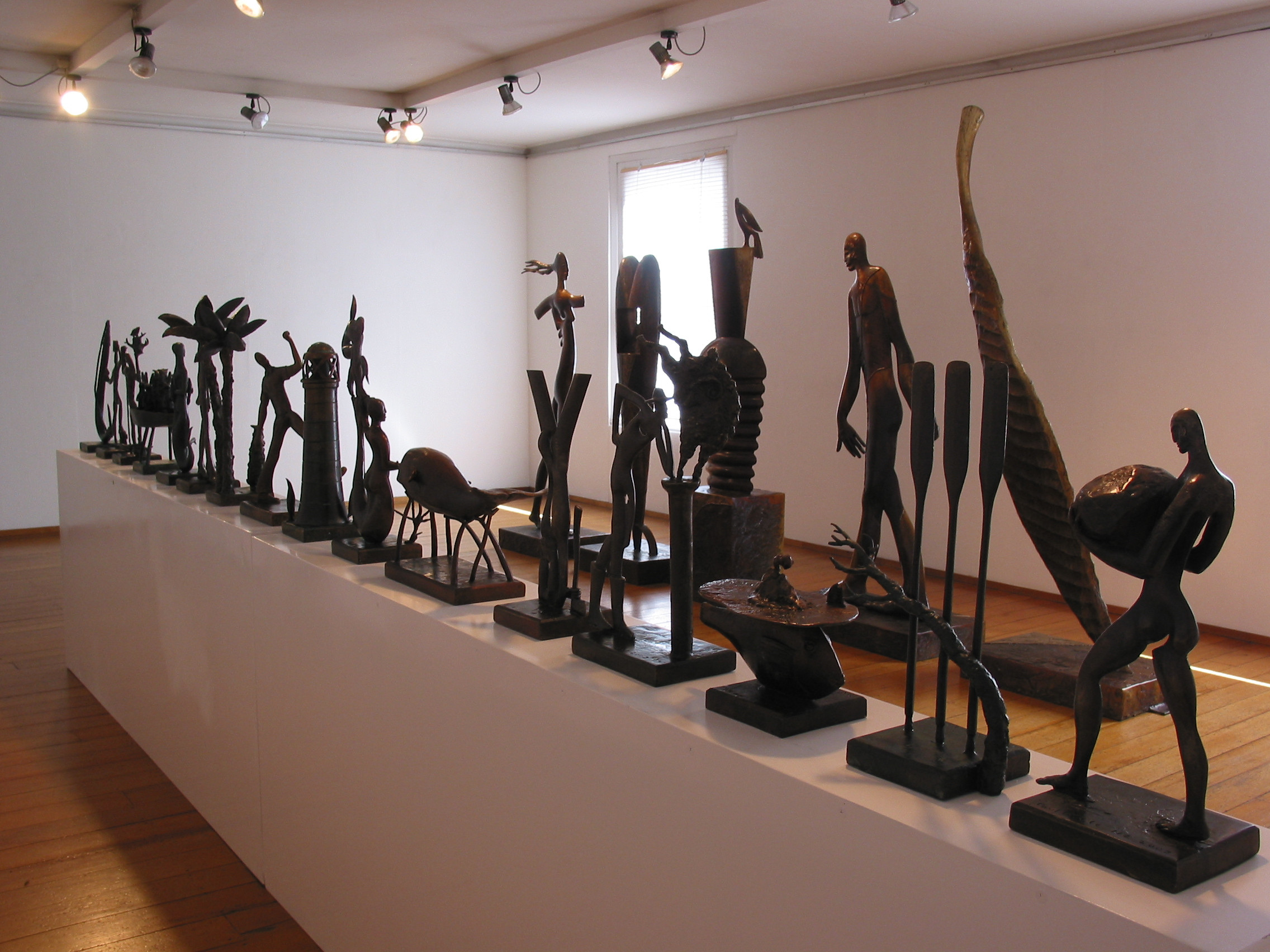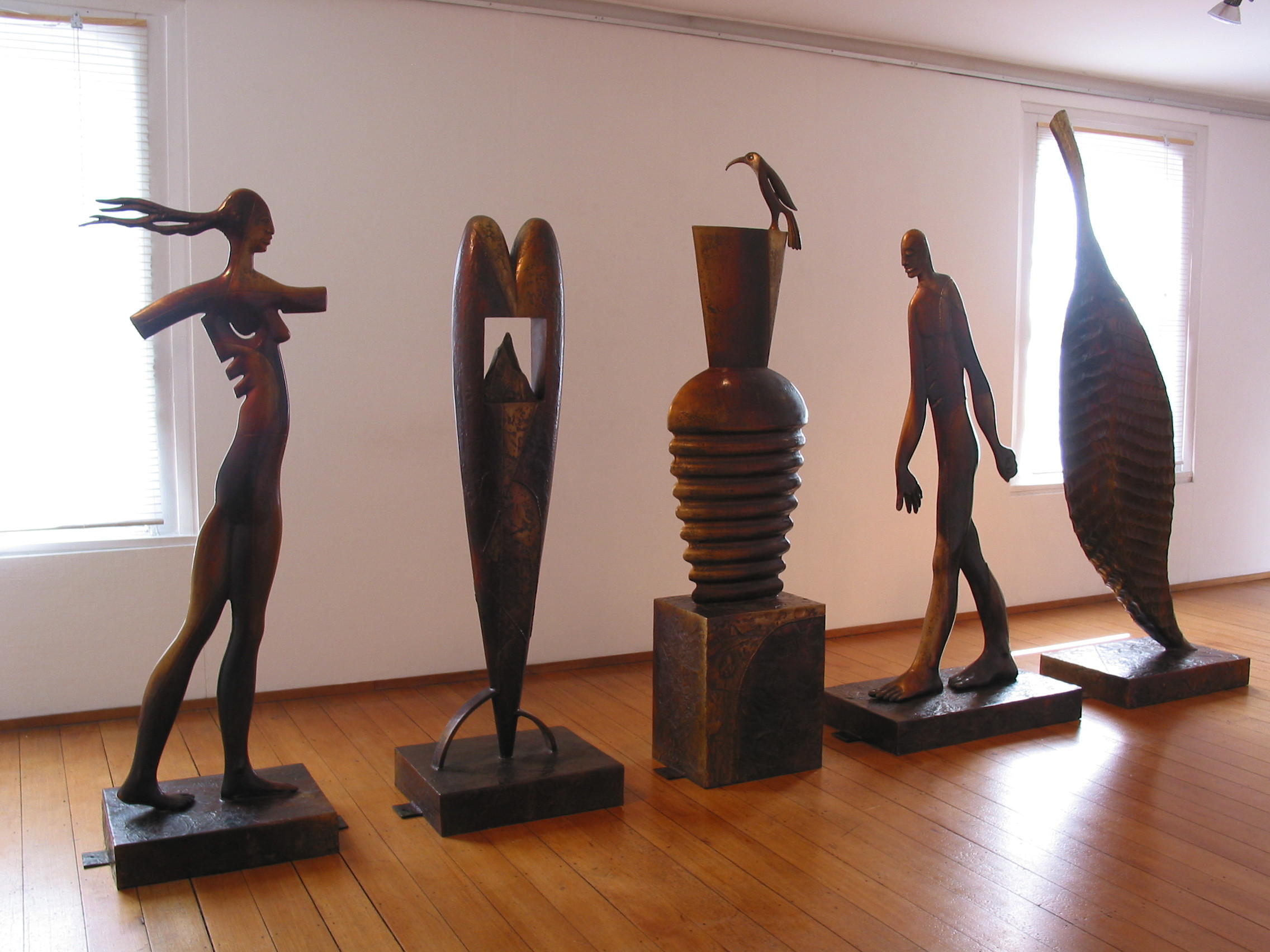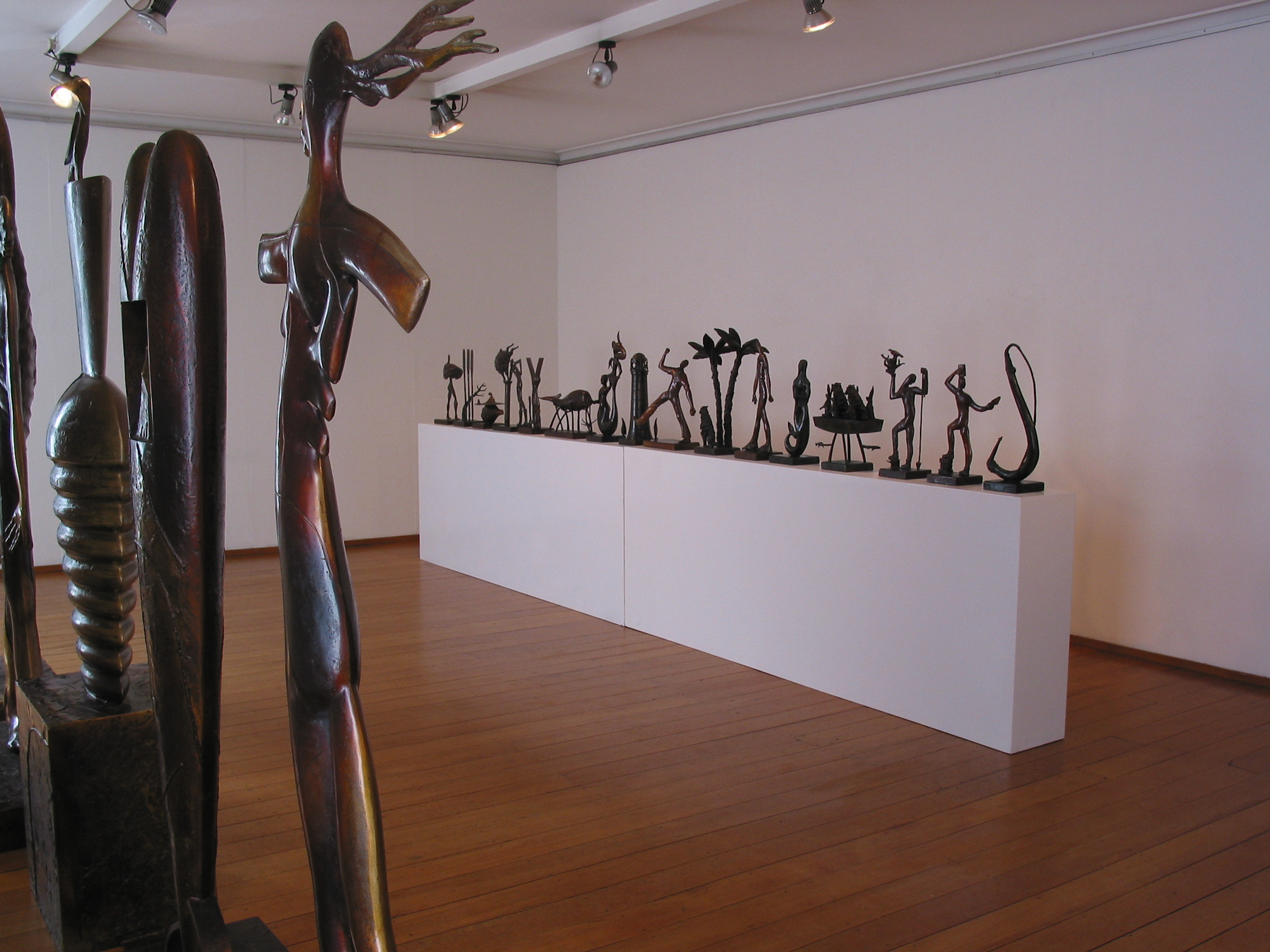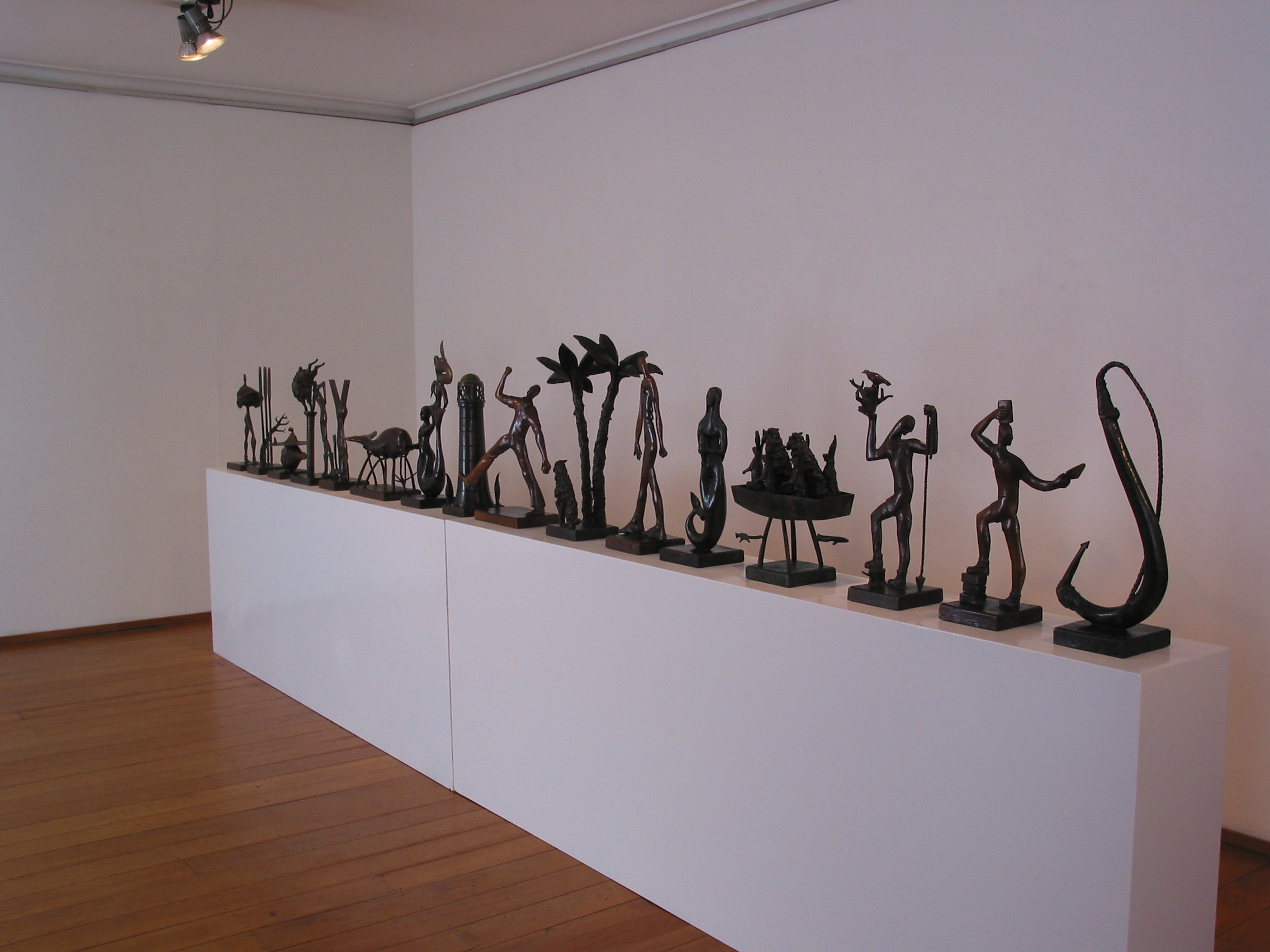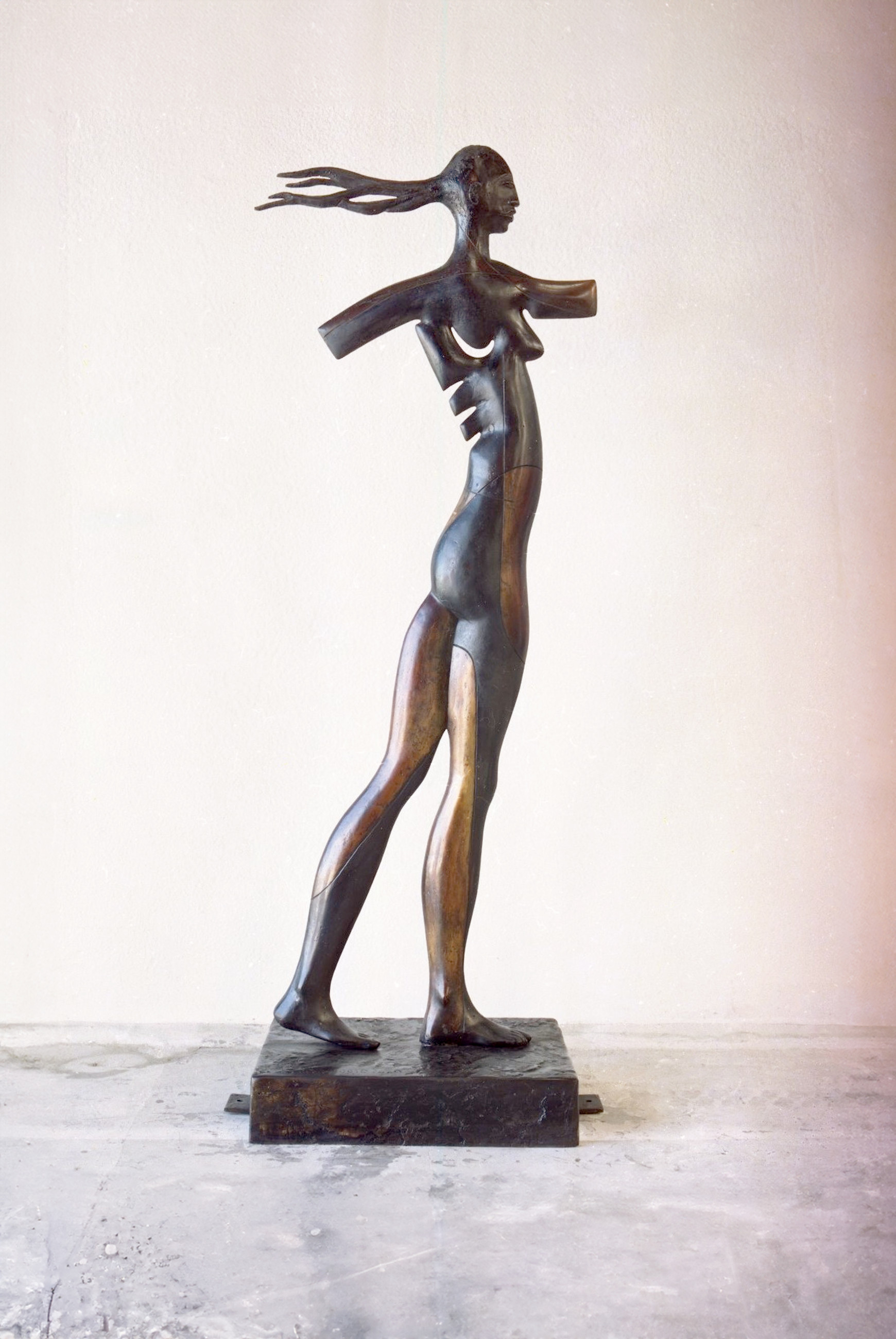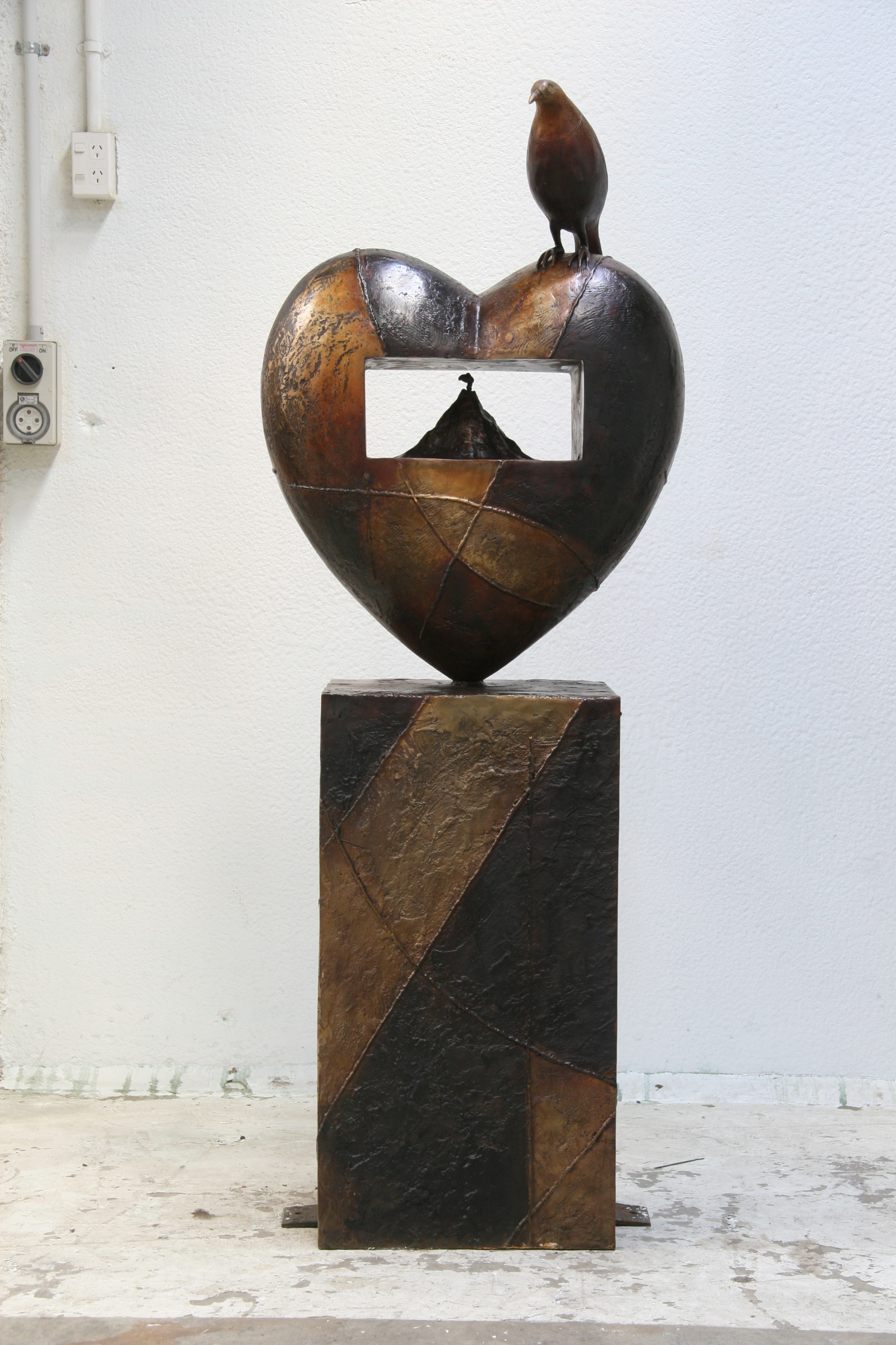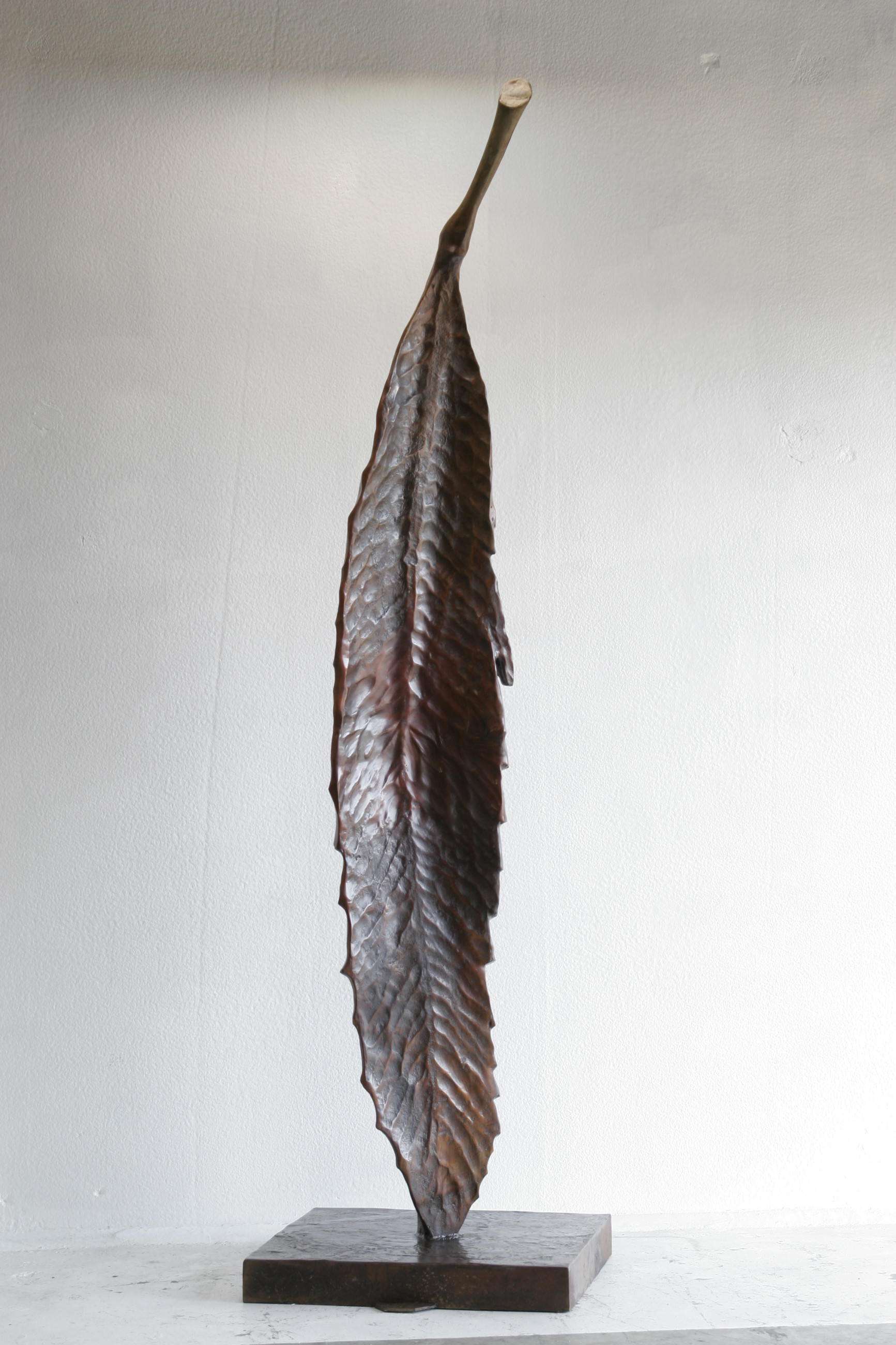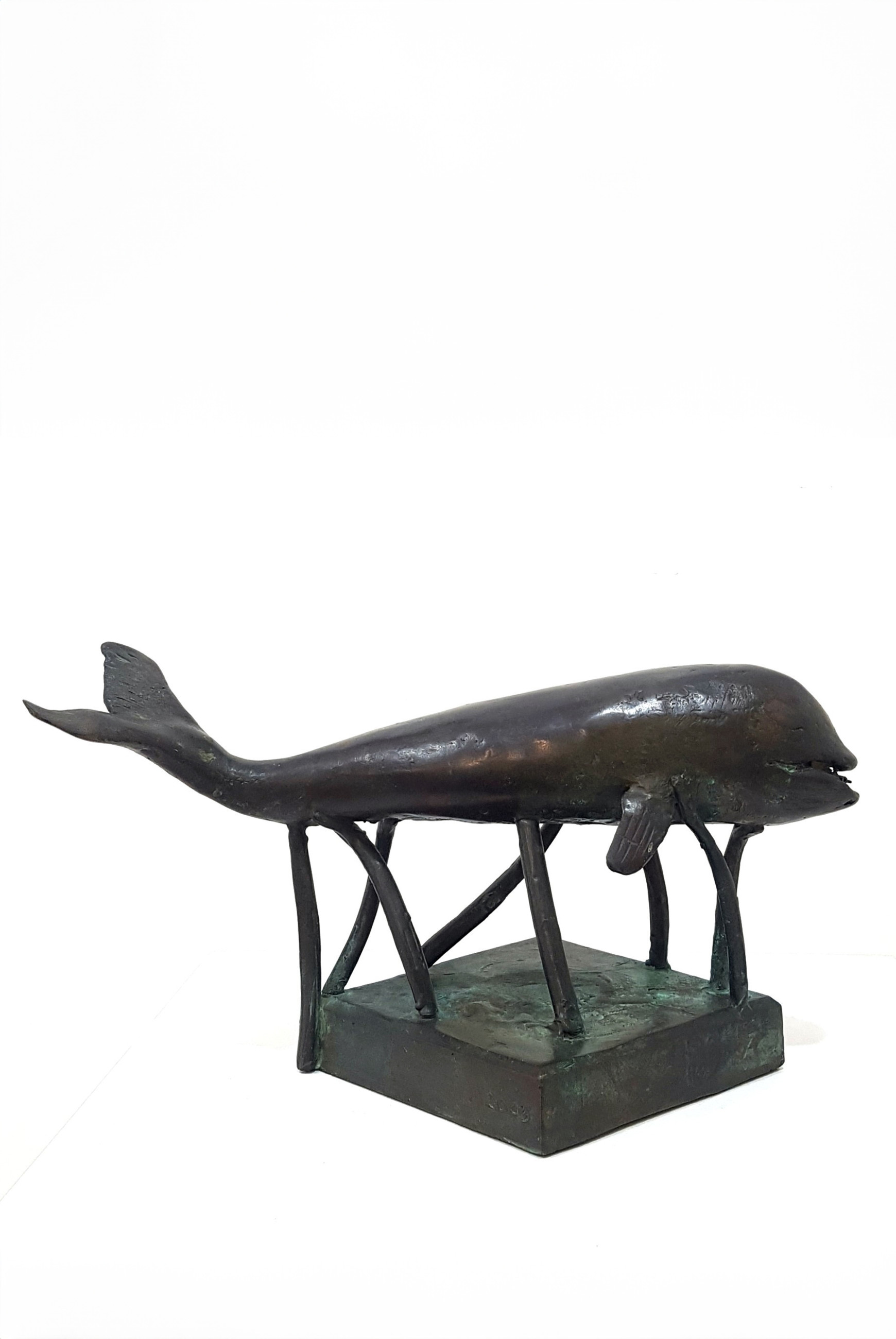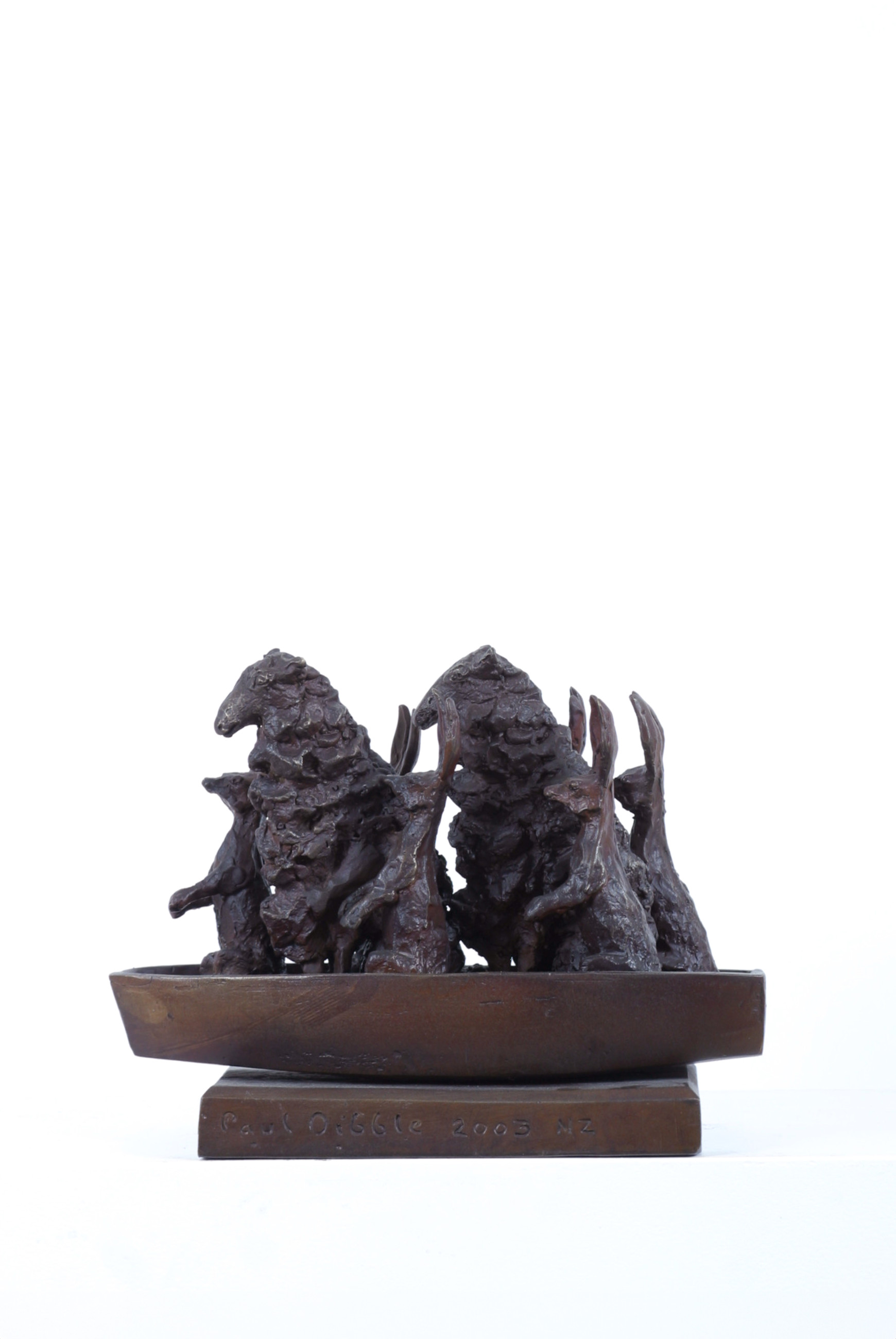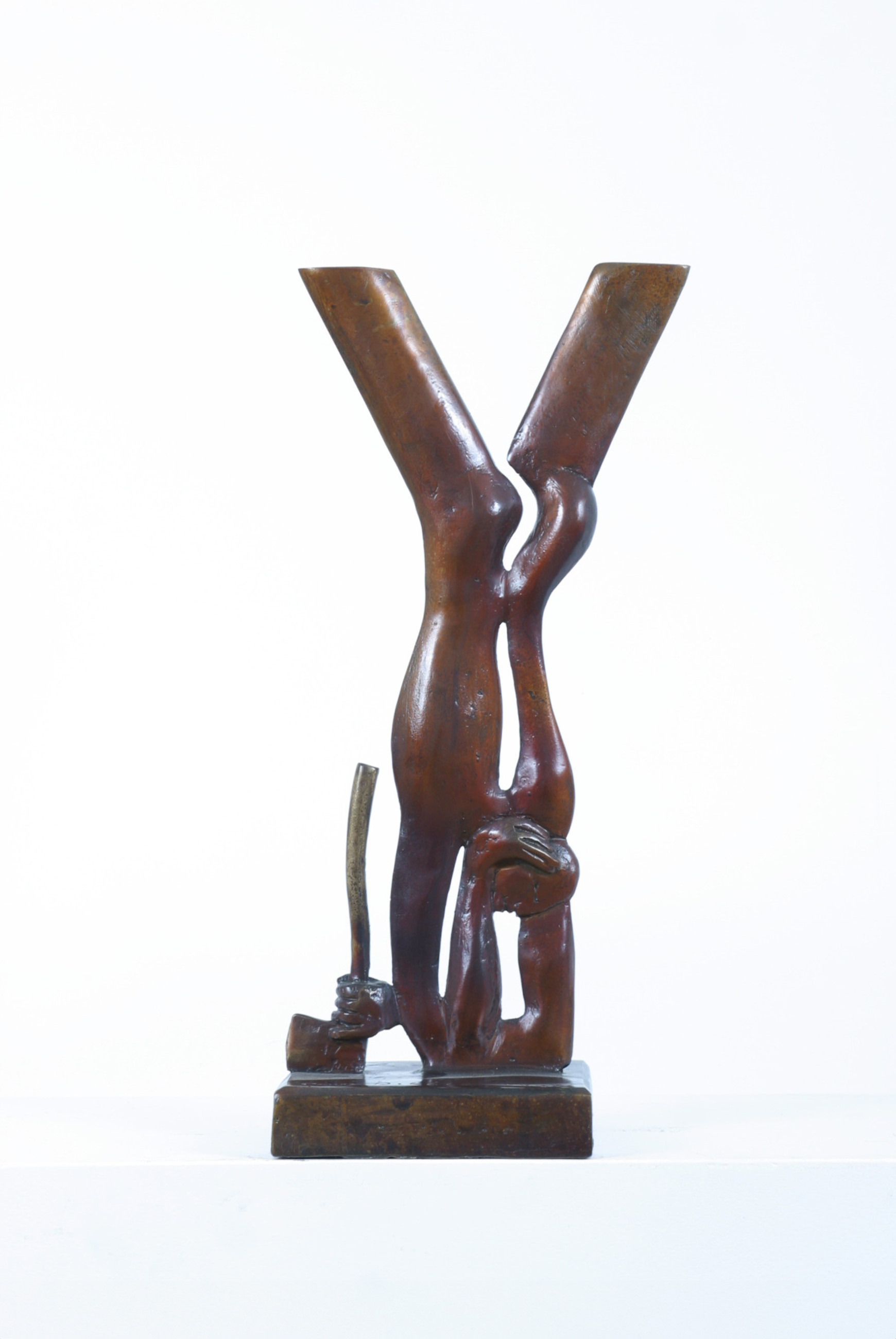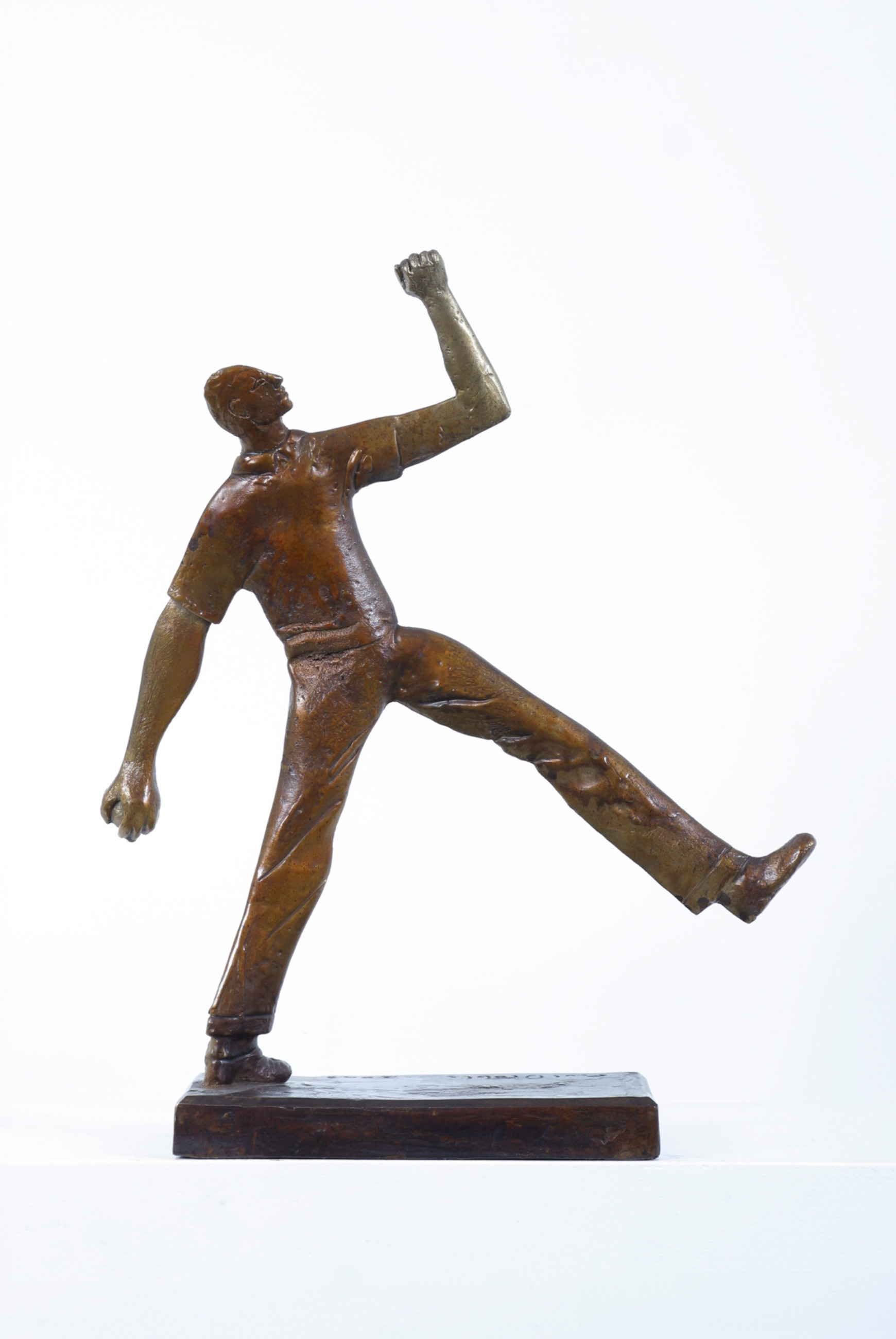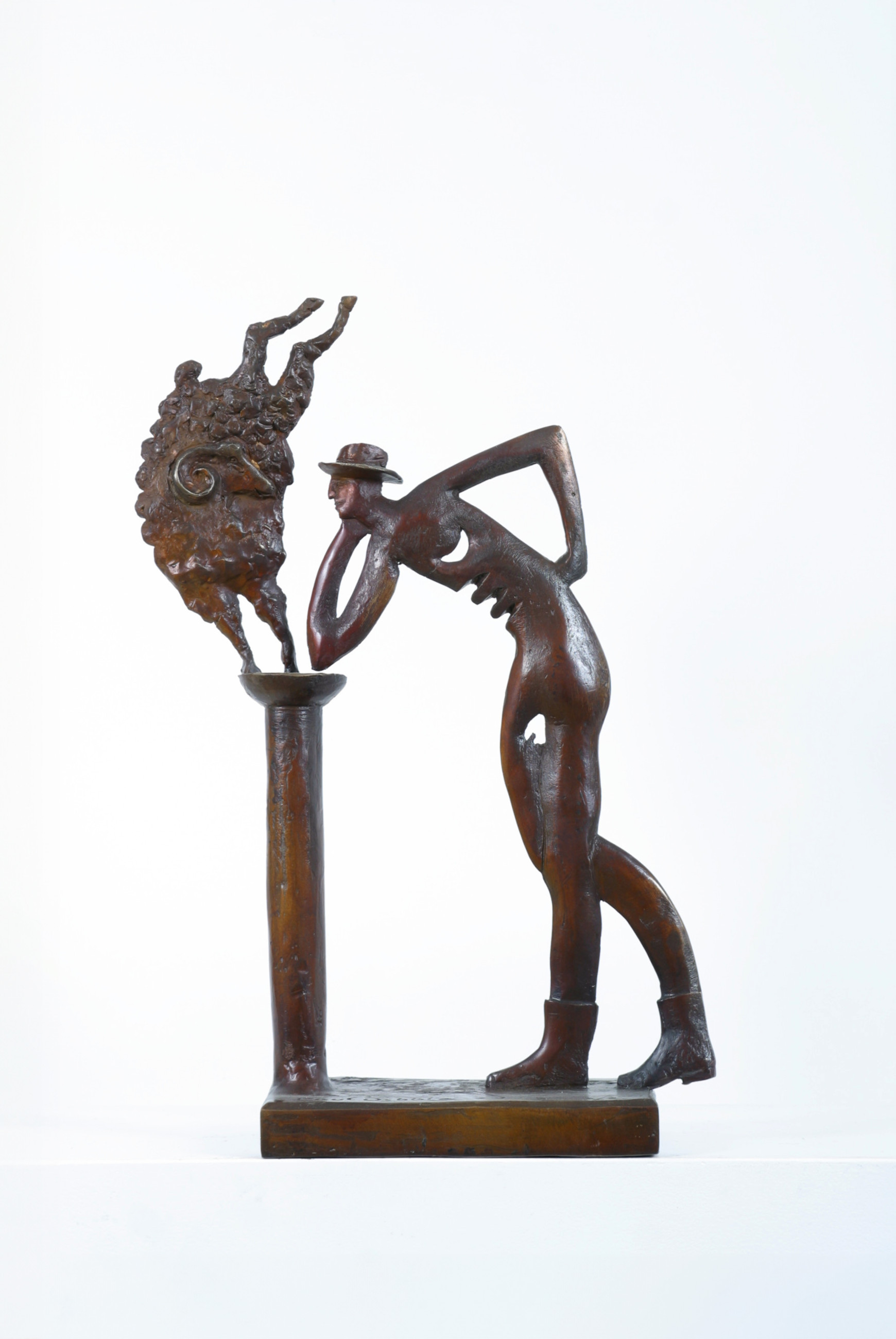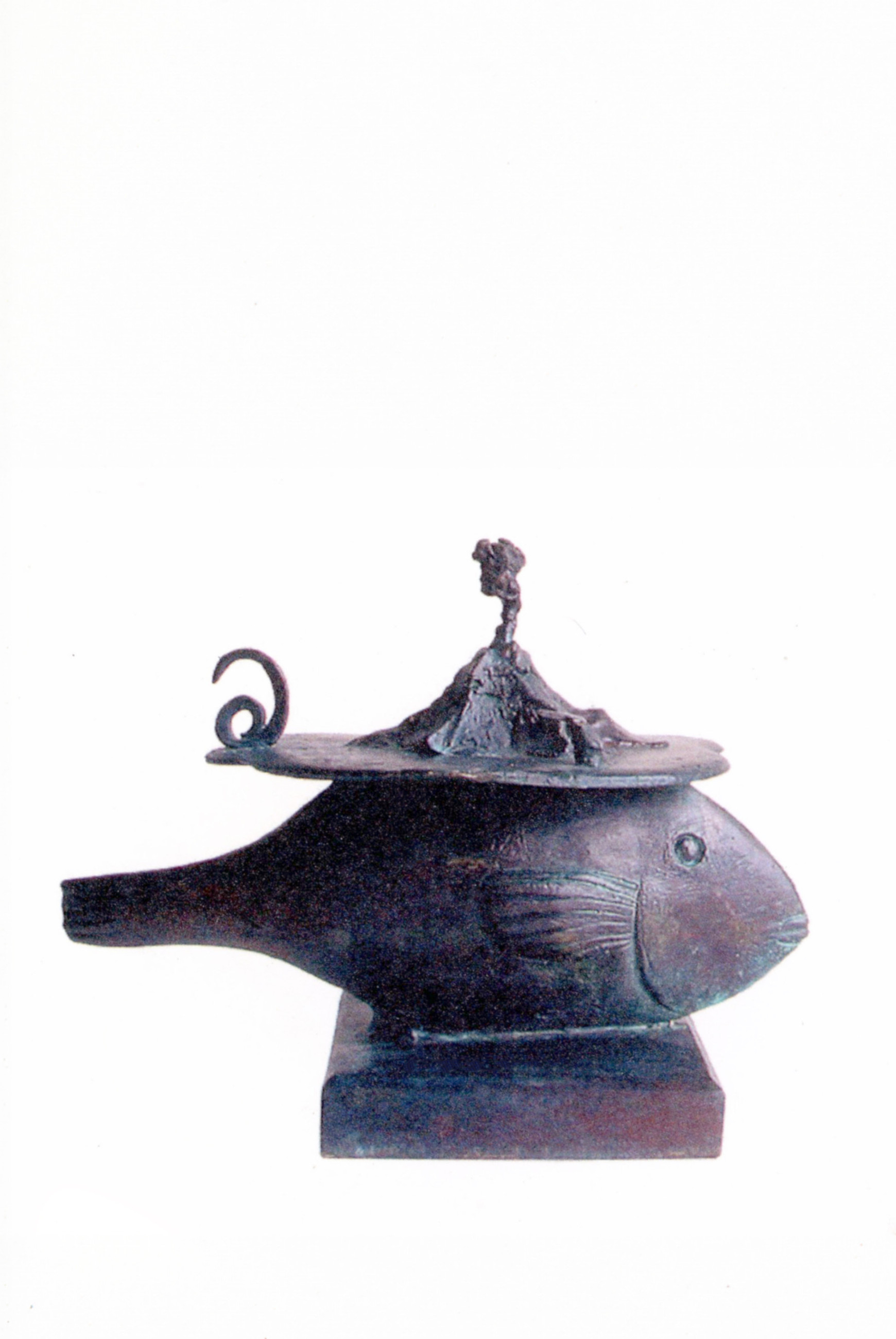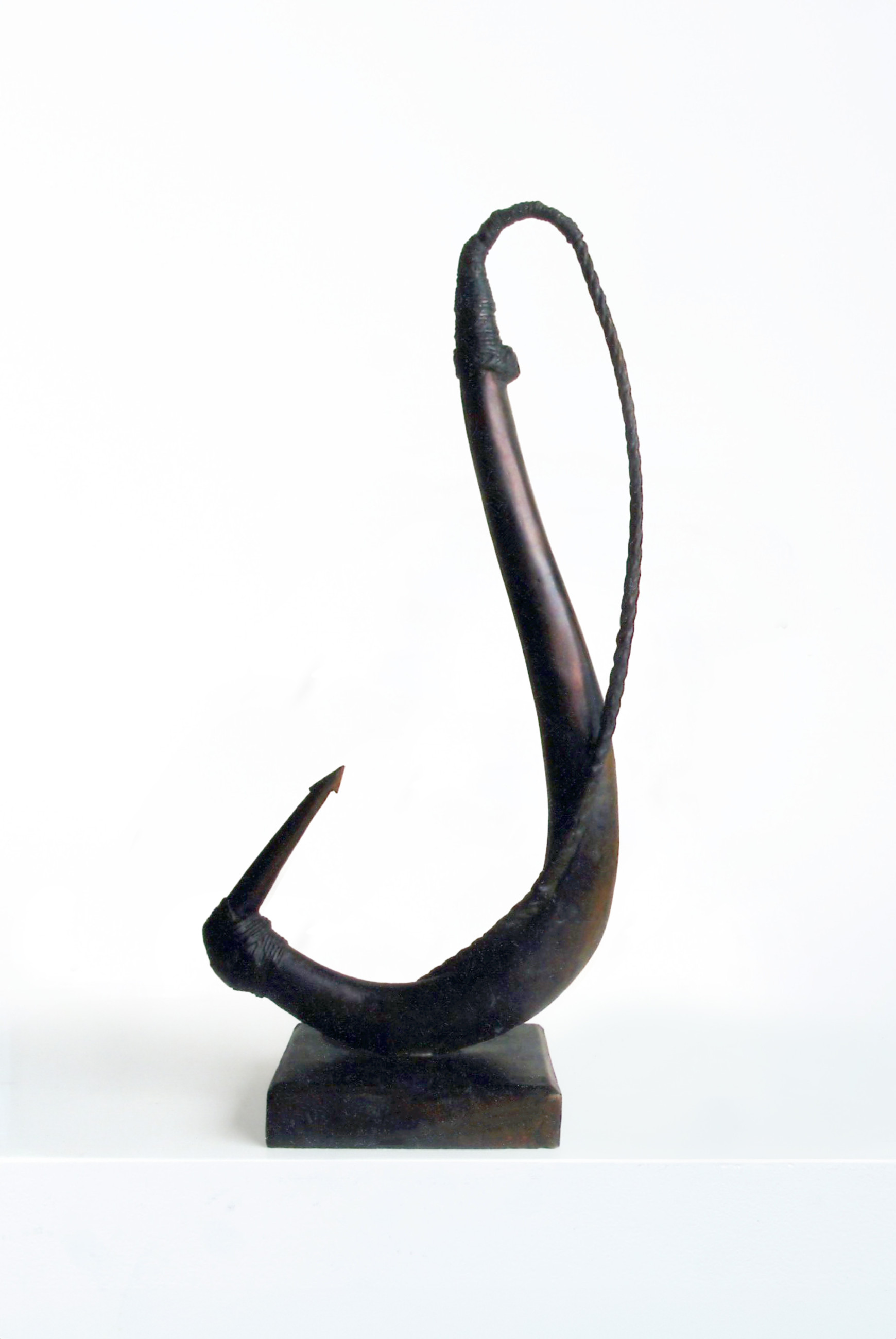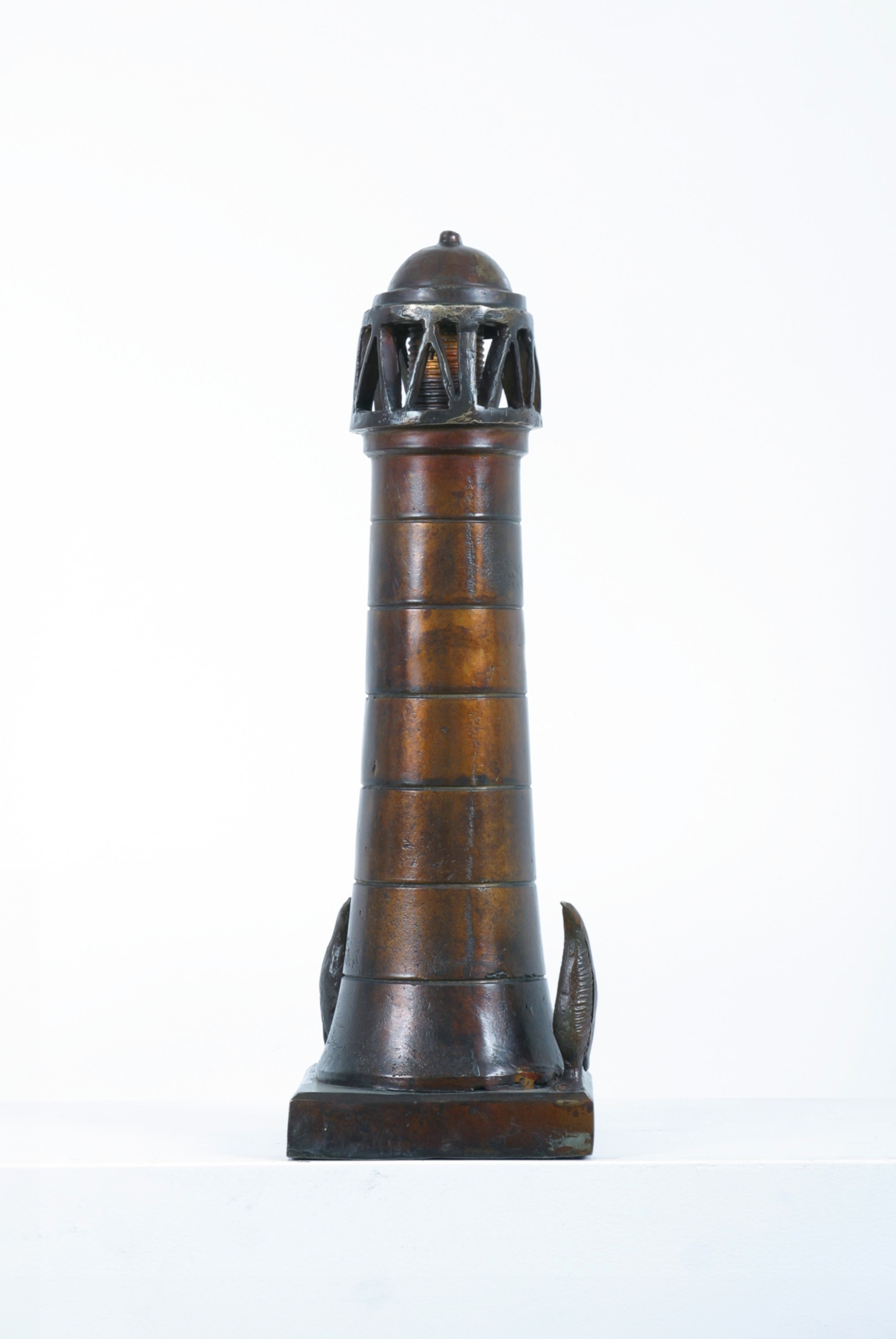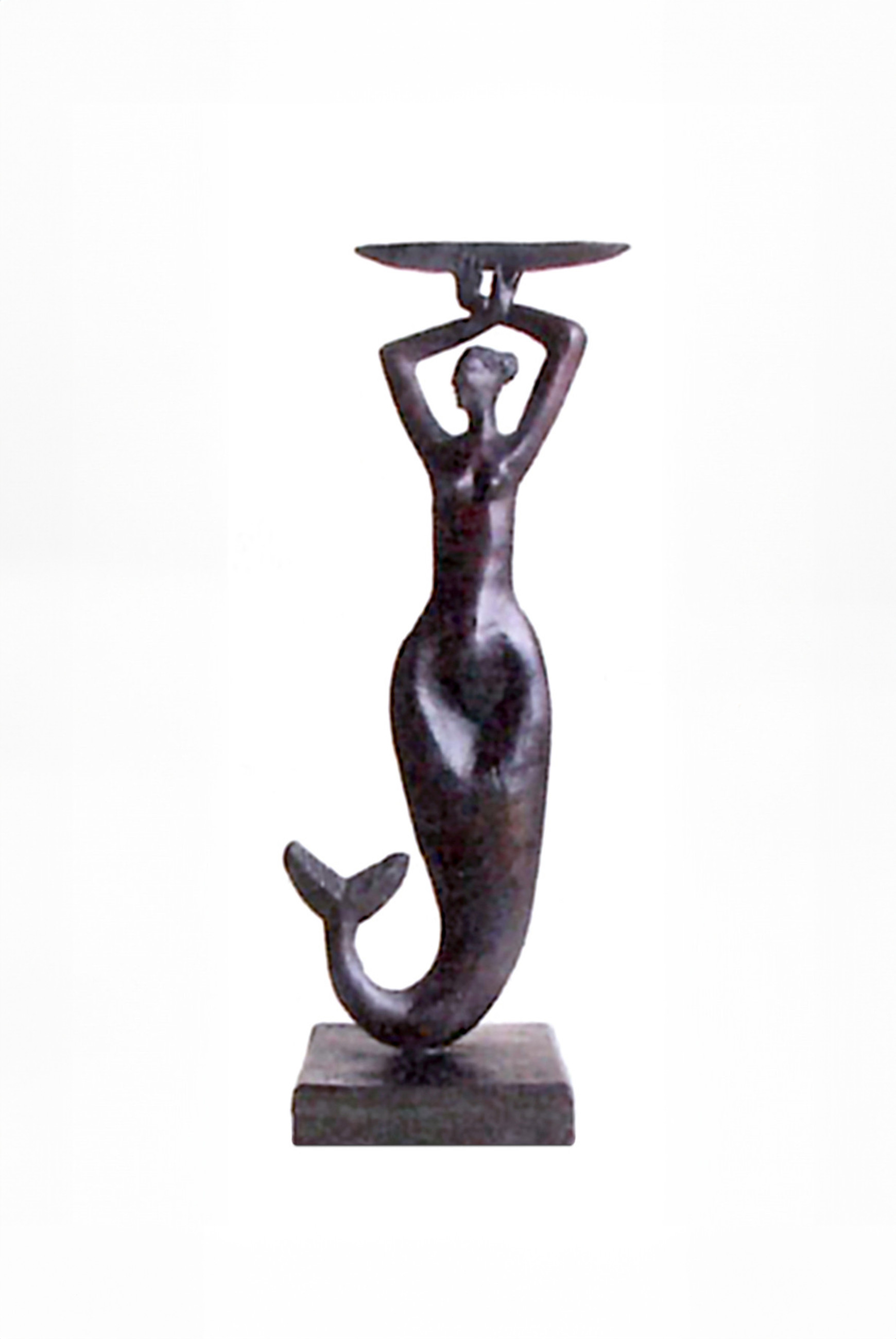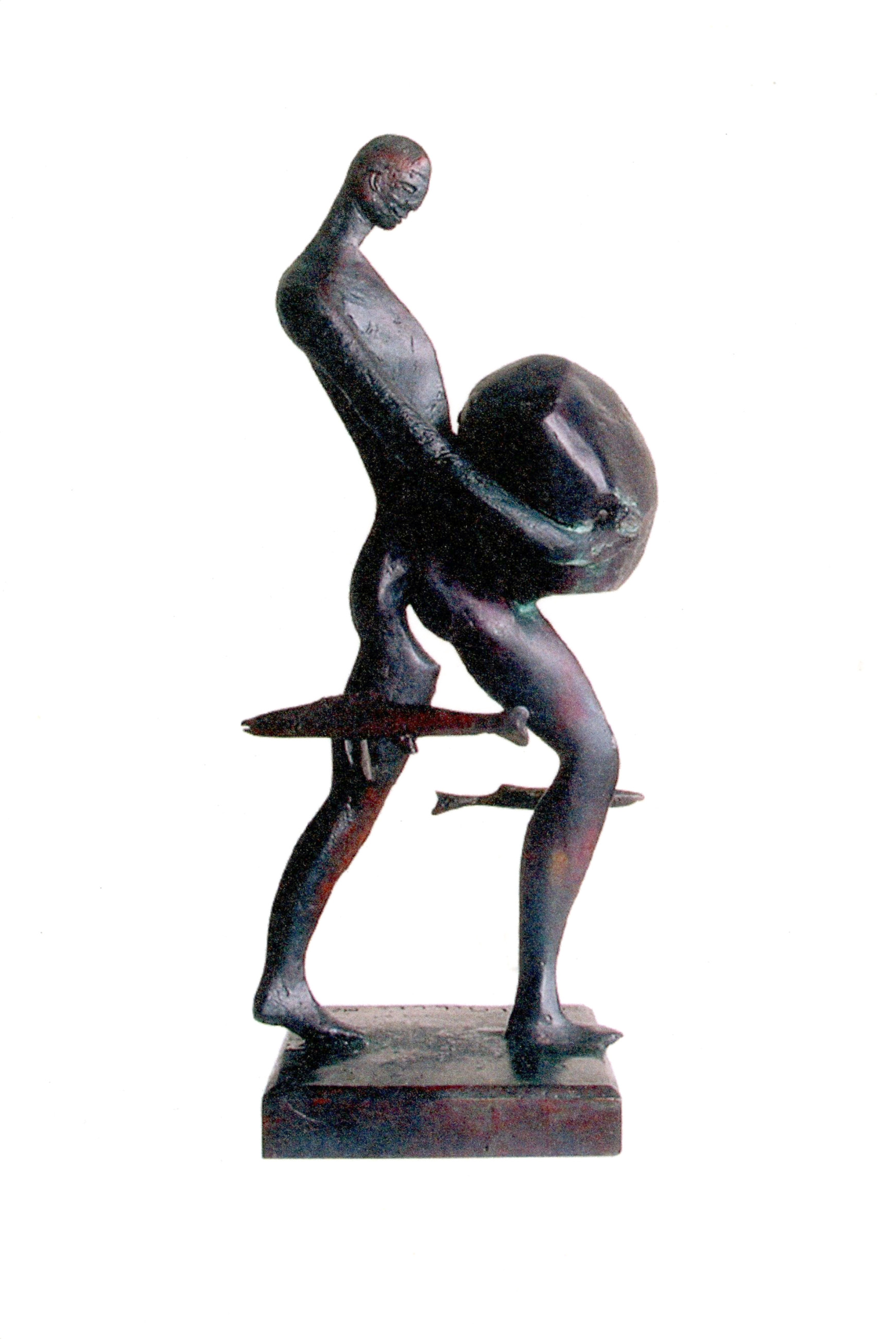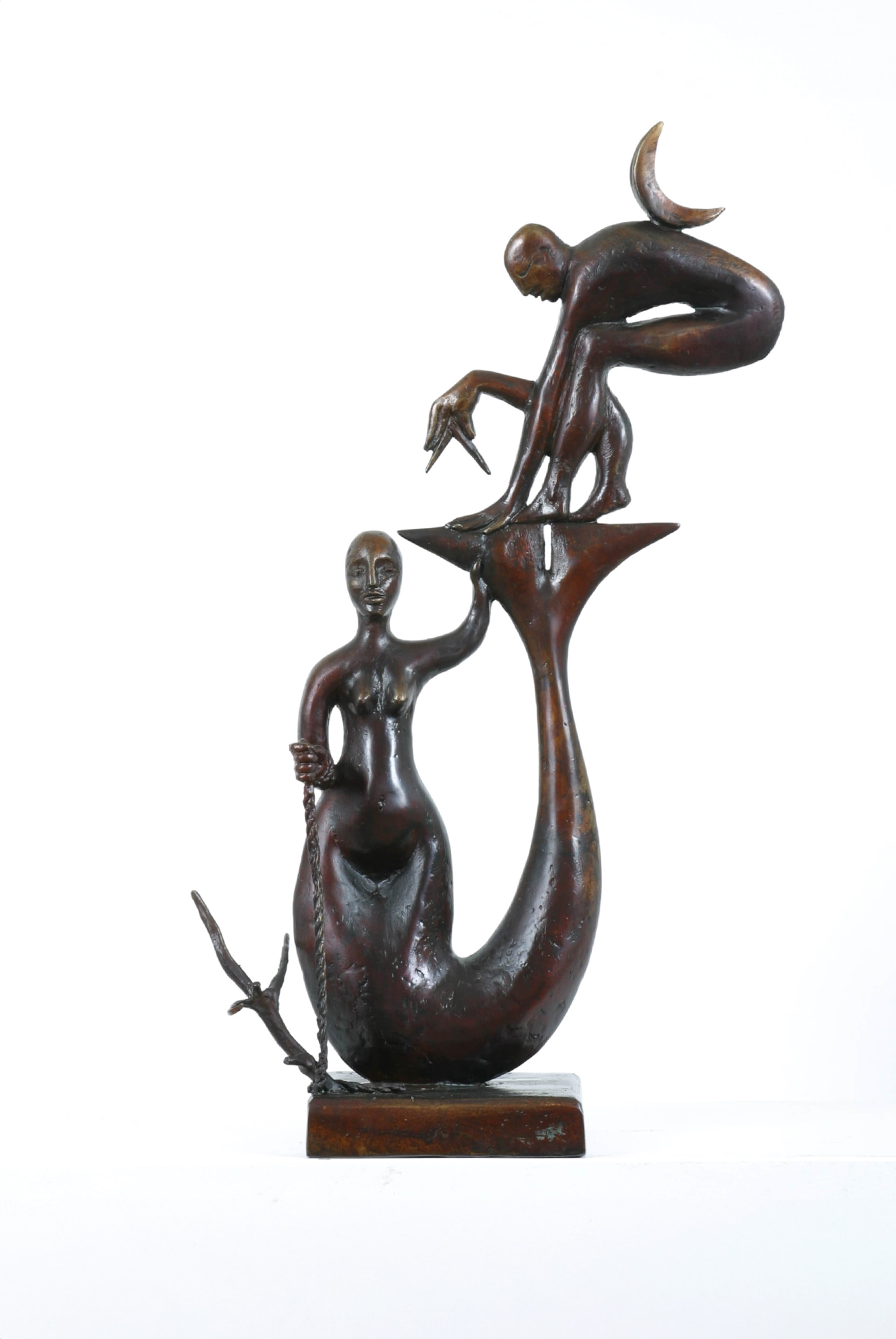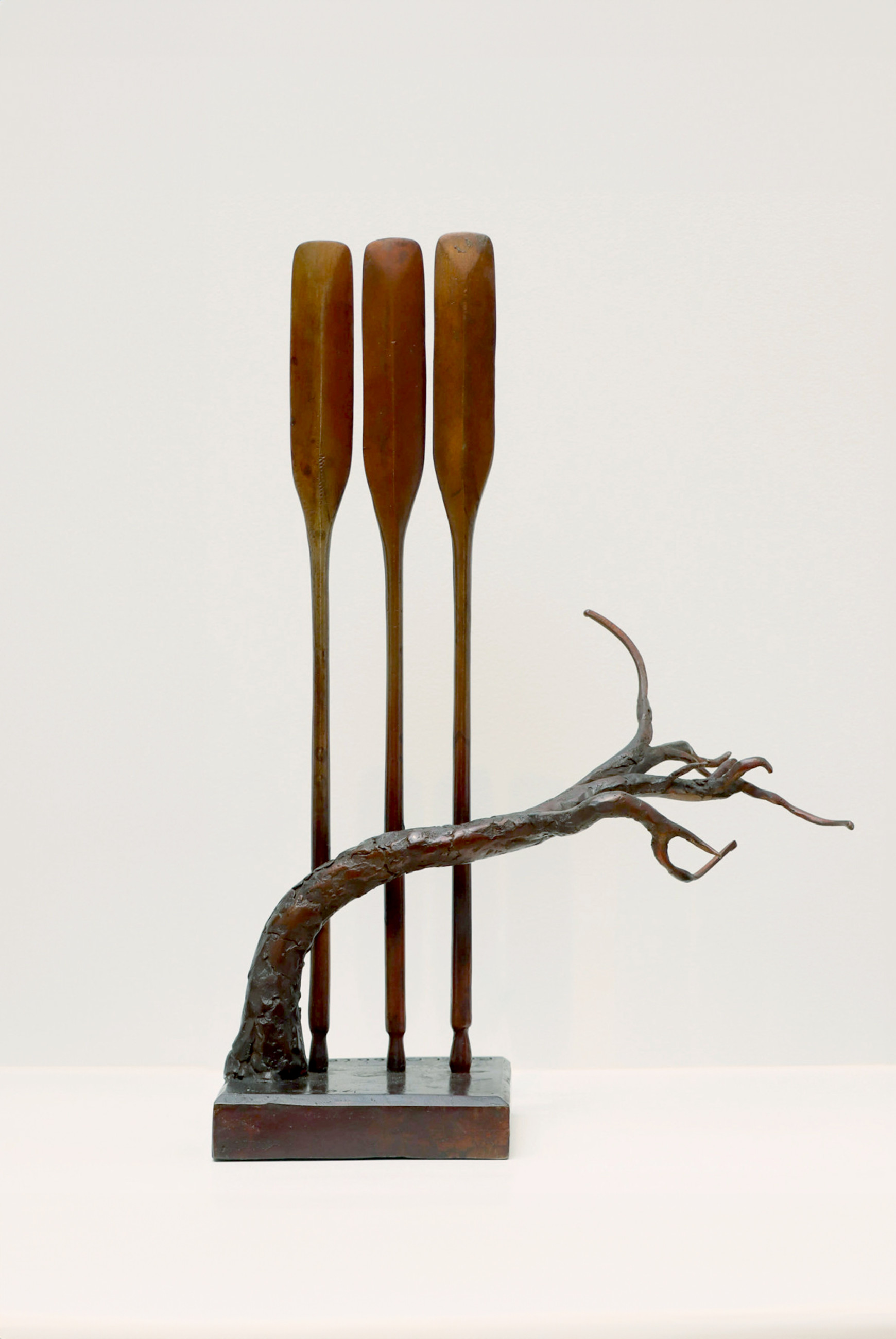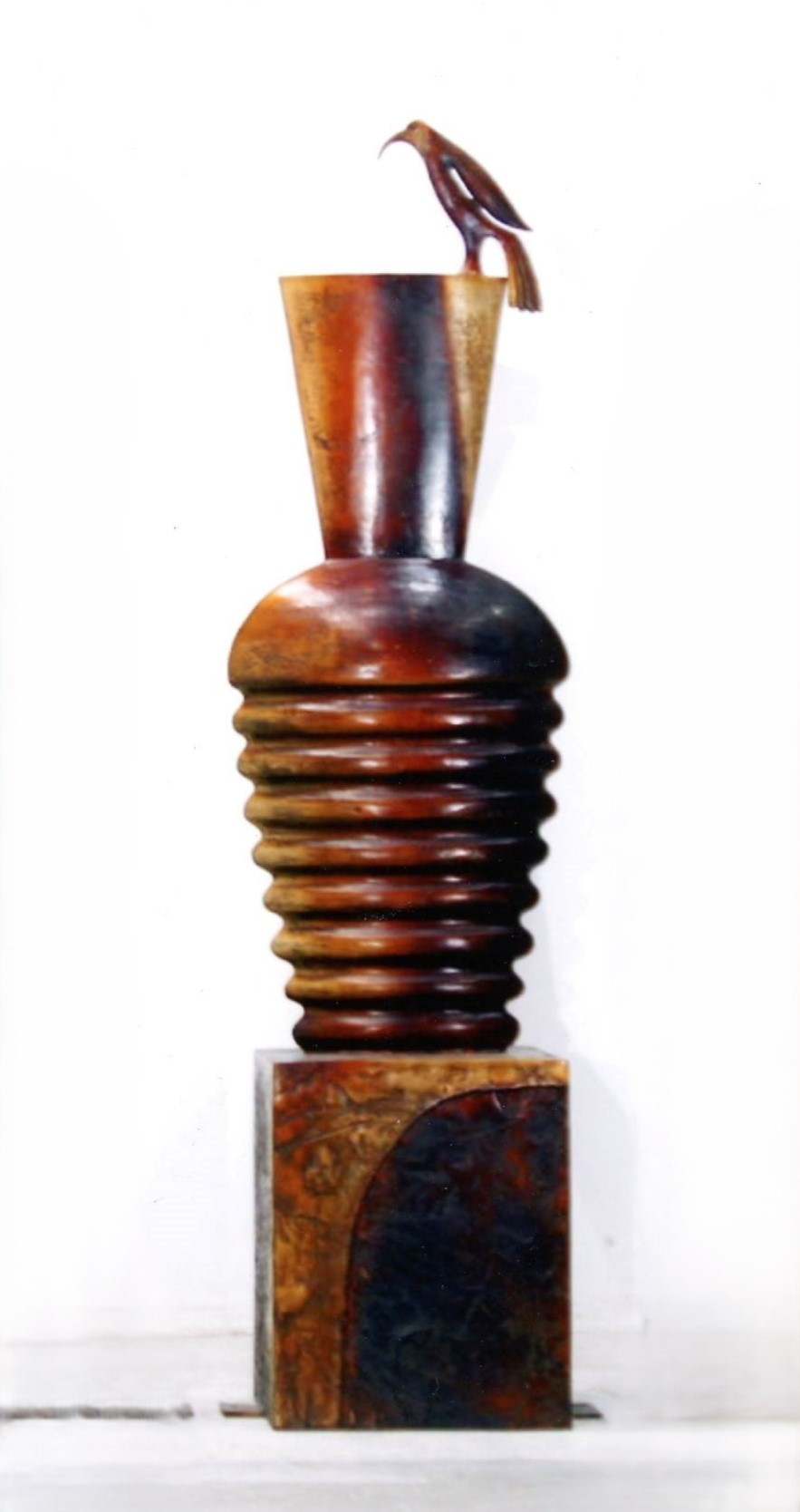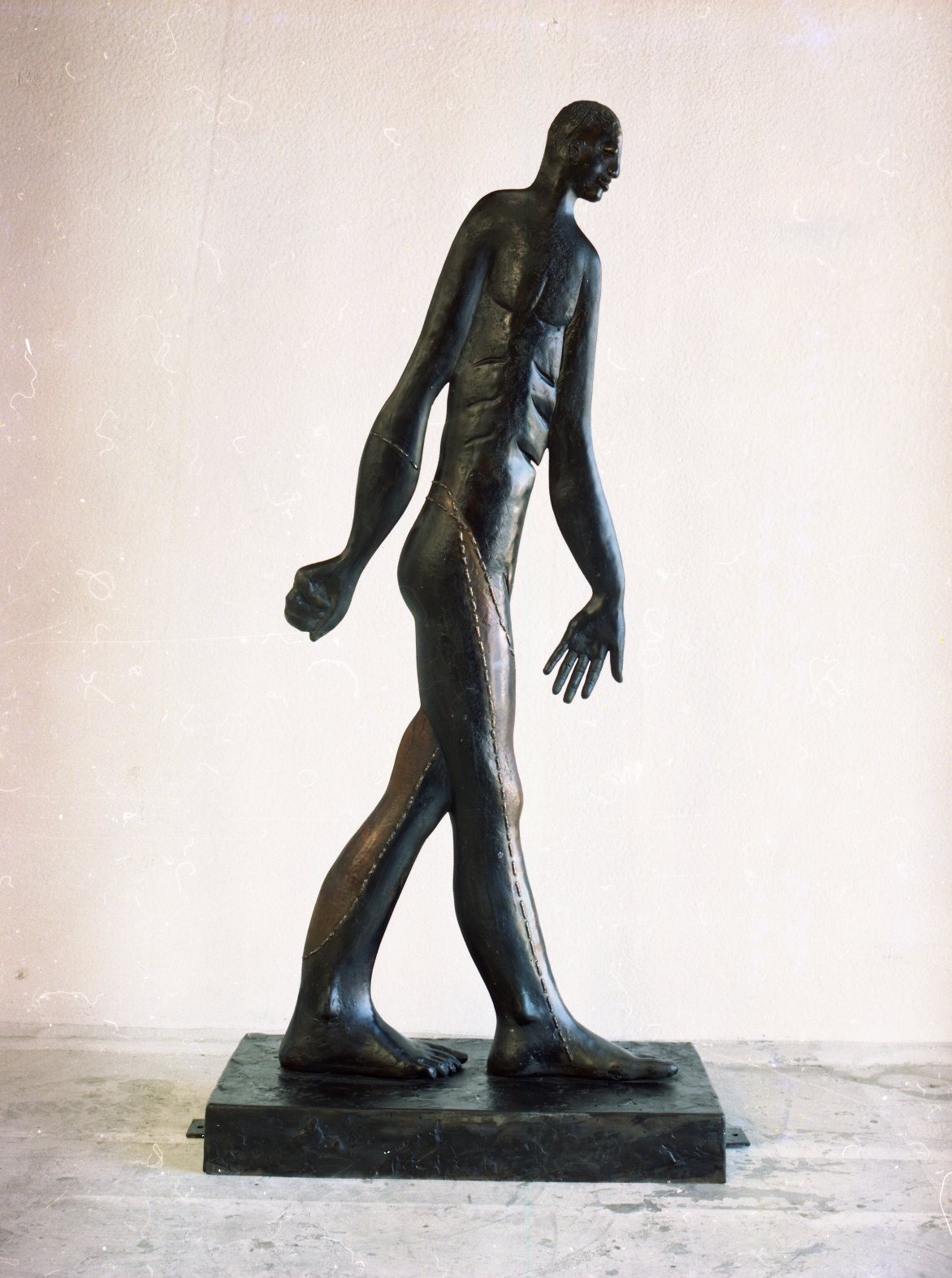September 16 - October 11, 2003 Down the Line
September 16 - October 11, 2003 Down the LineSolo, Brooke Gifford Gallery, Christchurch
Text
The small “Tableaux” works dazzled with the fascination of the visual forms creating their own special dynamic, a series of small units together creating a complete work. The large works, single items scaled monolith had their own sense of astonishment, as ode to New Zealand. They were enormous versions of relatively small objects, archaeological finds represented, and artefacts scaled huge – anchor stones and fishhooks, huia feathers, this making of them on scale assigning them a staged level of importance.
But often the middle-sized works of the period are forgotten. And they did become truly lost as “tableaux”, never bought in groups but always split into single works that fit so tidily in gardens, courtyards, and house entranceways.
But they were also exhibited and envisioned as parts of a bigger ‘whole’, multi-piece work. These were a part of several exhibitions. The first was in an exhibition in Sydney, “Looking for Australia” in 2003. Five units made up this work in this order: a walking man calling to mind the songlines of the Aboriginal wanderings, his surface decorated with charted lines; a torso referencing sculptor Brancusi with a kookaburra perched irreverently on the top; a feather; a standing heart with a cut out framed window section featuring a depiction of Uluru and, at the finish, a female figure, her long hair blowing back from her head to follow her. In “Down the Line” at the Brooke Gifford Gallery in Christchurch another five made up the series: a delicately curled leaf framing the selection; the man again, but now an unmarked gentle walker softly moving as if he is picking over rough ground. Again, there is a heart but, in this version, it is elongated and thin and the motif is of Mitre Peek; a vase reminiscent of Crown Lynn where a bird, not a New Zealand native, perches, and this female figure again with her hair sailing behind her.
The female figure was particularly popular. It was an abbreviated form with cut down arms and a soft undulating form. She was seen as a confident striding figure. One of the editions was purchased for a girls’ school.
The articles are created because of how they can sit together, a curve of one against more thickened forms, a straight rhythm versus diagonal slants. There were subsequent shows where the items stood alone – in exhibitions in Queenstown and in Havelock North.
These medium works, a human sized narrative, you walk past them, or view them as a group, and you become a fellow participants in the dialogue, conversations with each other and with you the on-looker.
